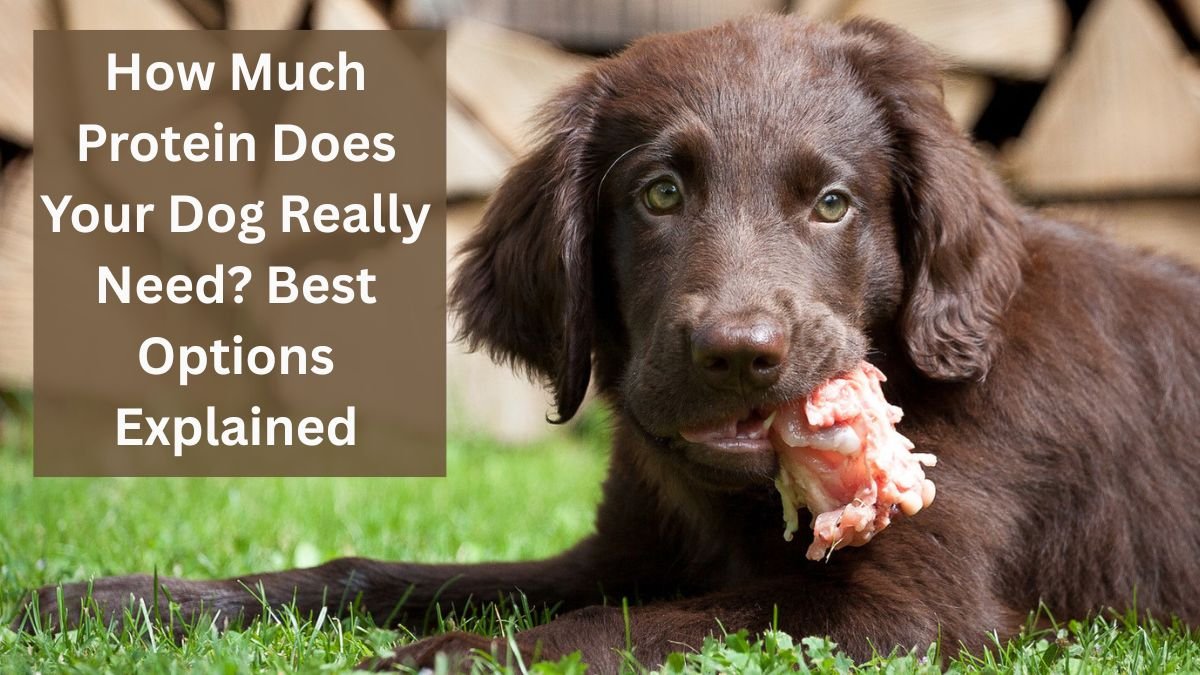A dog is not just our pet, it is a part of the family. Its health, nutrition and care are as important as that of a human. When we talk about dog diet, the most discussed element is protein. But have you ever wondered how much protein your dog actually needs? Can excess protein be harmful? Or is your dog getting less protein? Let us discuss in detail the role of protein, the amount needed and the best protein sources in this article.
Protein: The Basis of Your Dogs Well Being
Protein is a very crucial requirement in the life of dogs and it plays a role in the development and repair of the bones, muscles, skin, hair and nails. Besides this, protein also serves a significant key in generation of hormones and enzymes. Protein is a major source of energy of a normal healthy dog and the more active the dog the more energy it will gain.
An interesting fact is that about 30% of the body composition of dogs consists of protein, which shows how important it is to maintain its correct level.
How much protein is needed at what age and stage?
The protein requirement of every dog is not the same. It depends on its age, weight, breed, activity level and health condition. Let us understand it in different categories:
- Puppies:
Puppies’ body is developing rapidly, so they need high quality and high quantity of protein. The protein they get should be between 22-32%, so that their muscles and bones can develop properly. - Adult Dogs:
Generally, a healthy adult dog needs 18-25% protein. If your dog runs a lot or is of a working breed (like German Shepherd or Labrador), then it may need more protein (25-30%). - Senior Dogs:
As the dog grows older, its muscle loss starts. Hence, there is a misconception that elderly dogs should be given less protein. In fact, they require high quality, easily digestible protein — about 25-30%. - Pregnant or lactating females:
Their protein needs are the highest, as their bodies are fulfilling the nutritional requirements of their own as well as the offspring. In such a case, up to 28-35% protein may be necessary.
Too much or too little protein: both can be dangerous
High protein intake:
Many people think that more protein will lead to more muscle mass. But this is not true. If a dog is given more protein than it needs, its body can convert it into fat, leading to obesity and extra pressure on the kidneys, especially in dogs that already have kidney problems.
Low protein intake:
If a dog gets a low protein diet for a long time, it can lead to weak muscles, hair loss, dry skin and a weakened immune system. Therefore, it is important to provide a balanced amount of protein.
Best protein sources: What to give and what not to give?
Animal-based Proteins:
Chicken:
The most common and easily digestible protein source.
Fish:
Fish, especially salmon and tuna, also contain omega-3 fatty acids that are good for skin and hair.
Egg:
Eggs are the best source of complete protein. It is safest to feed them boiled.
Lamb & Beef:
These are rich in flavor but make sure they are low in fat.
Organ Meats (like liver):
Very nutritious but limit the amount.
Plant-based Proteins:
Pea Protein:
Many dog food brands include this now, especially in vegetarian options.
Soy:
Some dogs may be allergic to this, but it is fine in controlled amounts.
Brown rice and oats:
These also contain a small amount of protein and provide balance with carbs.
What not to give:
Do not give raw meat without consulting a doctor. It increases the risk of bacterial infection.
- Avoid processed meat or packed meat with high salt.
- Dairy products also do not suit many dogs.
How to identify the protein requirement of a dog?
If you want to understand whether your dog is getting the right amount of protein or not, then pay attention to these symptoms:
- Shiny hair and less shedding
- Energetic
- Balanced weight
- No skin allergies or rashes
- Muscle strength
If any problem is seen in these, then it is possible that the amount of protein is less or more. In such a situation, consultation with a veterinarian is necessary.
Custom diet or ready-made dog food: which is better?
Nowadays, readymade dog food is available in the market for all types of dogs, which contain the right amount of protein and other nutrients. If you have the time and knowledge, you can also give homemade diet, but it can be challenging to maintain the right balance of nutrition in it.
When buying readymade dog food, make sure that it does not contain “meat meal” or “by-products”, but some source like “real chicken” or “salmon” as the main ingredient.
Conclusion
Protein is not just a nutrient, but it is the basis of your dog’s life. With the right quantity, high quality and balance, protein is very important.
